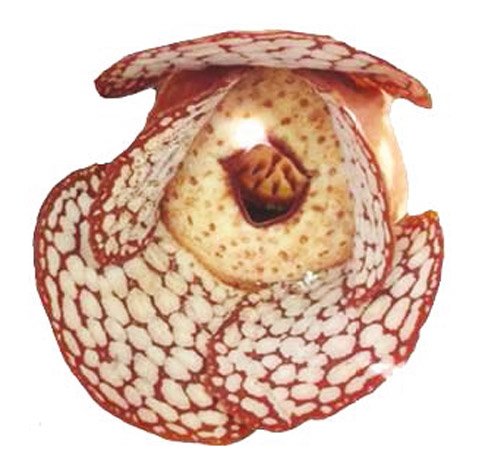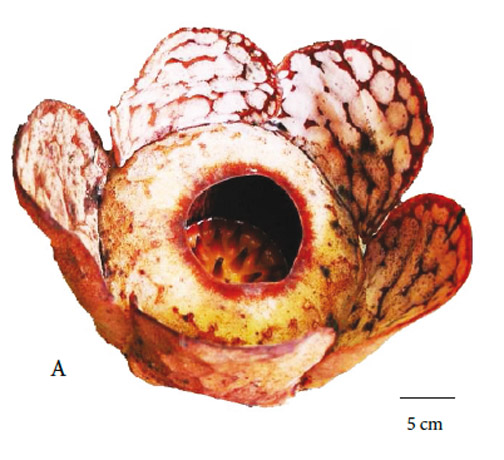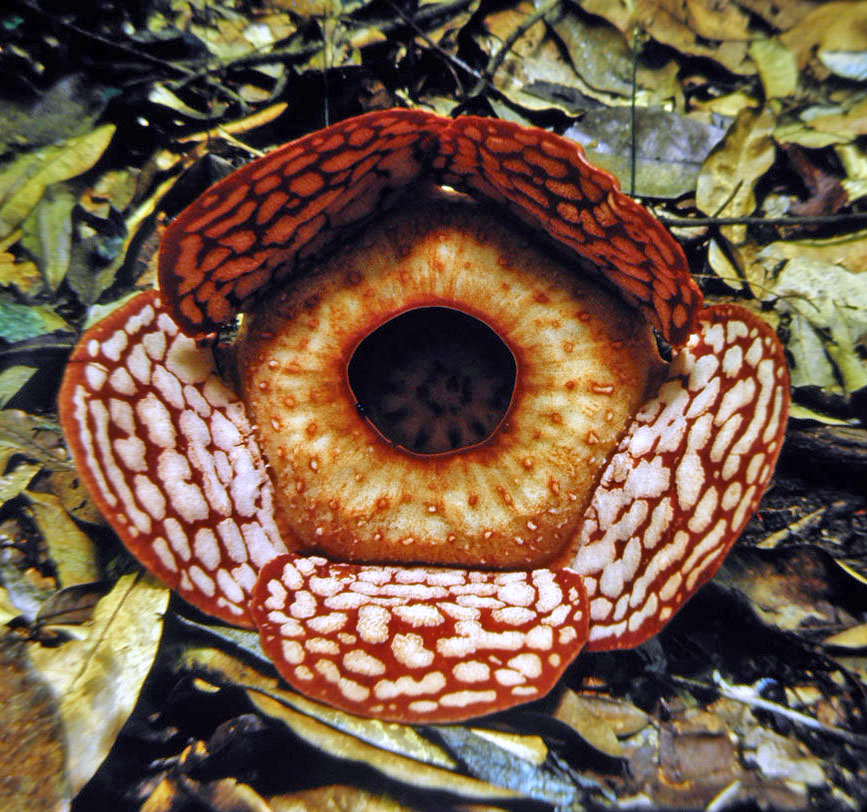
Male flower

Female flower
The species is named for Professor Tan Sri Dato’ Seri Dr. Sharifah Hapsah Syed Hasan Shahabudin, Vice Chancellor of the Universiti Kebangsaan Malaysia.
Adam, J. H., R. Mohamed , M. A. Aizat-Juhari & K.L.Wan. 2013. Rafflesia sharifah-hapsahiae (Rafflesiaceae), a new species from peninsular Malaysia. Turkish Journal of Botany 37: 1-7. This e-publication was not online October 2013, but “in press”, hence name has not been effectively published. The journal says it was available online 16 July 2013 and lost modified 4 September 2013. So Art. 30.2 applies and this pdf should be treated as a preliminary version.
Malaysia, Pahang, Raub District, Ulu Dong Province, Mount Benom Forest Reserve, on gentle hill slope of after-logged primary lowland dipterocarp forest. 3° 55' 13" N, 102° 00' 00.5" E,562 m. Collected 13 March 2011 by Nik Nadira Farhana 4 (CAP1B6 ♂ holotype UKMB).
This paper compares this new species with R. azlanii and R. hasseltii in a table and presents a key to "presently known related species from Peninsular Malaysia". It is not clear why the table nor the key fail to compare this taxon to Rafflesia cantleyi. As shown by Bendiksby et al. (2010), these two species are essentially identical using molecular markers. Moreover, their morphological similarities are obvious (see below). Given that all Rafflesia species show intraspecific polymorphisms to one degree or another, it is critical to evaluate the range of variation and then demonstrate that any proposed new species has discrete character combinations. This is especially the case when the new species is confined to a single locality, as is the case for Rafflesia sharifah-hapsahiae. A similar situation occurred with a Philippine taxon named R. banoana (Malabrigo 2010) which is actually a larger flowered form of R. leonardi (Barcelona et al. 2011).
Using the data presented in Nais (2001), seven of the morphological characters presented in Table (1) for Rafflesia sharifah-hapsahiae were compared to R. cantleyi. These were flower diameter, perigone lobe length and width, aperture size, number of circular rings on windows, ramenta structure and length, and number of anthers. In all cases, these two taxa show extensive overlap in characters. The spacing and degree of coalescence of the perigone white warts was included, but this feature apparently shows extreme polymorphism within taxa such that a range of variation can be seen across species (compare photos below). For these reasons, it does not seem that the authors have convincingly demonstrated that Rafflesia sharifah-hapsahiae is distinct from R. cantleyi.Literature cited
Barcelona JF, Fernando ES, Nickrent DL, Balete DS, Pelser PB. 2011. An amended description of Rafflesia leonardi and a revised key to Philippine Rafflesia (Rafflesiaceae). Phytotaxa 24: 11-18.
Bendiksby M, Schumacher T, Gussarova G, Jamili N, Mat-Salleh K, Nery S, Madulid D, Smith SA, Barkman T. 2010. Elucidating the evolutionary history of the Southeast Asian, holoparasitic, giant-flowered Rafflesiaceae: Pliocene vicariance, morphological convergence and character displacement. Molecular Phylogenetics and Evolution 57: 620-633.
Malabrigo PLJ. 2010. Rafflesia banaoana (Rafflesiaceae): Another new species from Luzon, Philippines. Asia Life Sciences Supplement 4: 139–146.
Nais J. 2001. Rafflesia of the World. Kota Kinabalu: Sabah Parks.
 Male flower |
 Female flower |
